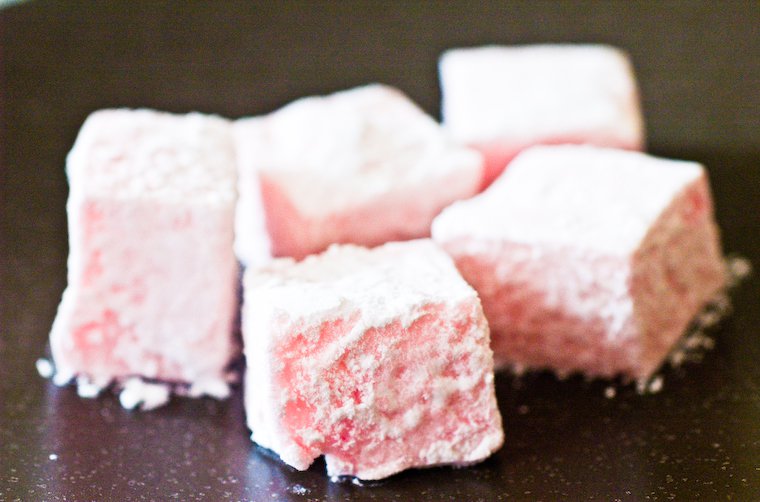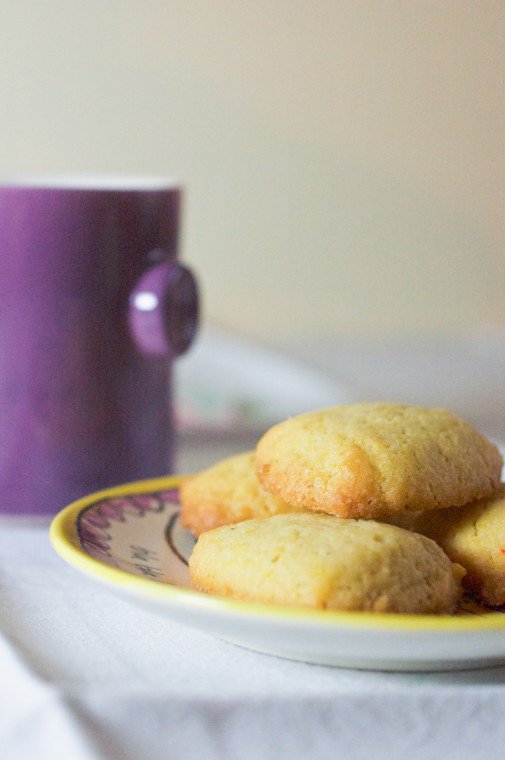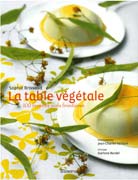Guimauve — the French marshmallows — is the stuff clouds are made of. They have the soft and cottony flavor of childhood, and resistance is futile when I spot the pretty pastel cubes in pastry shops.
Rarely am I disappointed, but I do have to mention this one recent time when I bought an assortment from Pain de Sucre and got mostly weirdo flavors nobody in their right mind would want in their marshmallows — I’m talking chicory and whiskey, angélique, or saffron and chili pepper. I mean, really, I’m as open-minded as the next person, but what’s next: reblochon? Fortunately, I’d had the wisdom to get a few of their coconut-coated chocolate marshmallows as well, so I was able to make it up to my seriously shaken palate.
Painful memories aside, guimauve has been a long-time resident on my make-my-own list. I’ve been collecting recipes for French marshmallows for years like they were butterflies, but never actually followed through. Why? Because they all called for sirop de glucose, a thick glucose syrup that’s dearly loved by professional pastry chefs but has yet to become a home baking staple. I know where to find it, but I don’t feel like buying a 2-pound tub just to make marshmallows.
Guimauve is the stuff clouds are made of. It has the soft and cottony flavor of childhood, and resistance is futile when I spot the pretty pastel cubes in a pastry shop.
And then one day, Christophe Michalak came along and showed me the way. As part of the publicity for his recent book C’est du gâteau !, an interview of him appeared in ELLE, along with his basic recipe for guimauve. And, miracle or miracles, that recipe called for honey, not glucose syrup.
I clipped it and threw out all the others*.
Rose and chocolate are Maxence’s and my favorite guimauve flavors, respectively, so my plan was to make a single batch and flavor one half with rose syrup, the other with cocoa powder, guestimating the amounts of flavoring because the printed recipe didn’t include these measurements.
The whole project worked out so well I had to pinch myself to believe I had really brought into this world such ideally fluffy cubes of French marshmallow perfection (rather than sleepwalked to the nearest pâtisserie and pillaged their stock).
And if my datebook is to be trusted, it seems Valentine’s Day is around the corner, so if you’re the sort who gives a fig, this might just be the perfect gift. You can dream up endless variations in terms of flavoring and coating to match your sweetheart’s tastes: I recommend orange blossom water and fruit purées of all sorts, and chocolate-dipping is always a winning strategy.
Don’t be intimidated by the length of the recipe; it’s not difficult at all. The version that was published in ELLE had been streamlined in the extreme to fit the narrow side bar, but I reincorporated as much detail as I thought would be useful to a first-time guimauve-maker.
* I’m kidding. I would never throw out a recipe.









